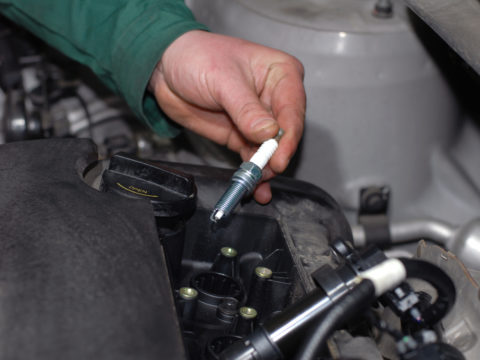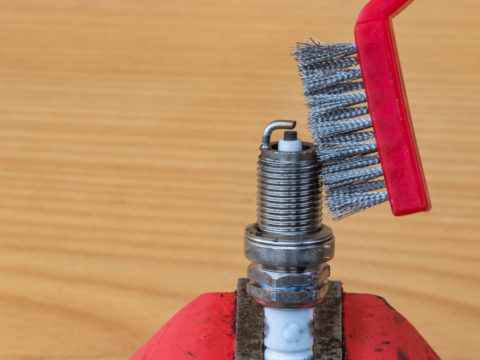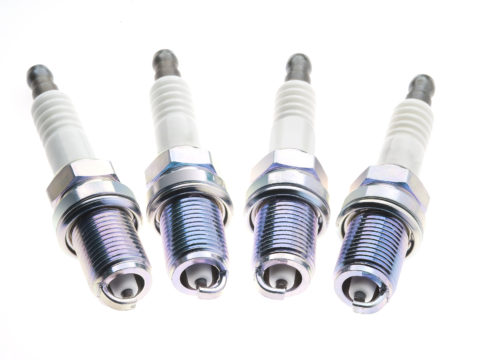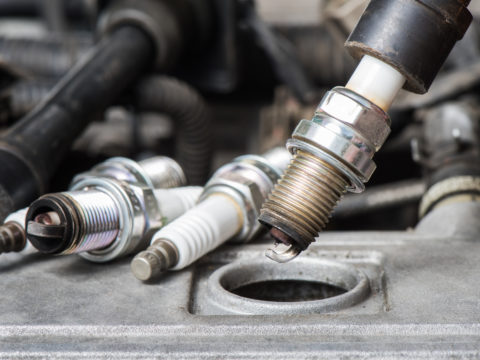Spark plugs create energy spark in your engine. If you have a diesel engine or intend to get one, you may be wondering how many spark plugs are inside. Well the answer is 0! A diesel engine generally has no spark plugs as they operate differently than a gasoline engine.
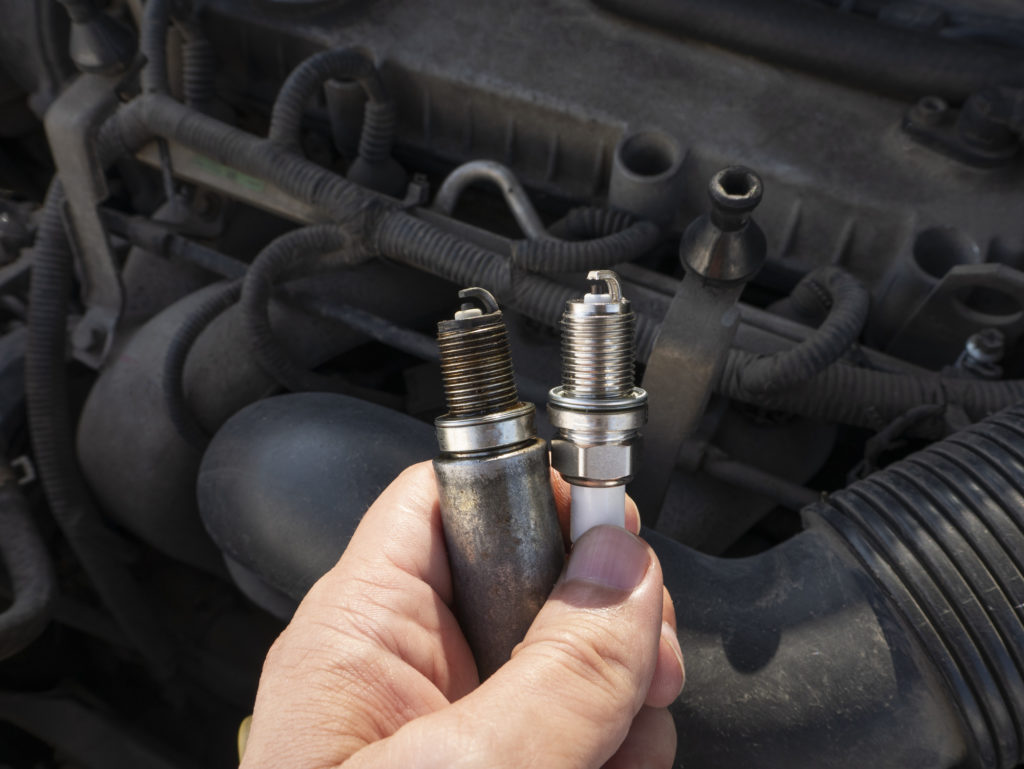
Spark plugs are essential components of any gas-powered engine. Think of a spark plug as a tiny but mighty bolt of lightning.
The spark of electricity a plug emits across a small gap provides the ignition required for combustion to start your vehicle. Putting the engine’s pistons in motion powers up your vehicle, and they stay powered up to create a smooth burn of the compressed air-fuel mixture.
Spark plugs thrive in hot environments. They withstand the extreme pressure and heat within the cylinders and burn off deposits from fuel additives and other contaminants.
Without this spark, your vehicle will not start or go anywhere.
How Many Spark Plugs Does a Diesel Engine Have?
None, a diesel engine and a gasoline engine operate differently.
A diesel engine uses a heating device called the glow plug.
Glow plugs have the same shape and size as spark plugs but serve a different purpose. Instead of depending on a spark, diesel fuel requires pressure and heat to ignite. The heat comes from a glow plug.
Contents
What Do Diesels Have Instead of Spark Plugs?
Diesels have glow plugs. Like the spark plug, the glow plug ignites the fuel-air mixture in your engine’s pistons. There is a glow plug installed on top of each engine cylinder.
The glow plug produces the heat required for the diesel engine to start, run, and function—especially in cold weather. However, the cylinder block and head also absorb heat. Glow plugs in the combustion chamber help bring this vital heat back to the engine.
How Do Glow Plugs Work in a Diesel Engine?
Glow plugs have a three-phase operating system. This system ensures the engine has enough heat to ignite the diesel mixture in your engine while generating energy for the vehicle.
These phases are:
- Pre-heating—This makes the engine easier to start and helps start your vehicle quickly.
- Temperature maintenance—Provides the ideal combustion conditions for the engine.
- Post-heating—Maintains the engine’s heat during the combustion process.
A spark plug:
- Ignites the air-fuel mixture—Electrical energy goes through the spark plug and jumps the firing end gap. The electrical spark ignites the air-fuel mixture in the combustion chamber.
- Removes heat from the combustion chamber—Spark plugs remove heat at the firing end, so it is low enough to prevent pre-ignition, but high enough to prevent fouling. Thermal energy is transferred to the engine’s cooling system.
Do Any Diesels Have Spark Plugs?
During combustion, diesel fuel requires more fire compared to gas. Diesel molecules are heavy, and their structure causes heat differently.
Diesel fuel requires three times as much pressure from the pistons to ignite, so compression plays a vital role. You cannot burn diesel fuel using a spark plug like gas and other similar gases.
Some dual-fuel engines have carburetors and spark plugs with a compression release lever. You would start the engine on diesel. Once the engine is warm, you push the gas lever down and pull a diesel lever to raise the compression and run the injection pump.
What Diesel Engine Has Spark Plugs?
The general belief is that diesel engines don’t have spark plugs, but some do. A few agricultural diesel tractors will use various fuel types.
An excellent example is the Allis-Chalmers heavy-duty engine. The engine uses diesel fuel, gasoline, or liquefied propane gas.
Another diesel engine with a spark is the Farmall Super M-D diesel engine. The engine starts on gasoline and has two levers that help the operator switch to diesel.
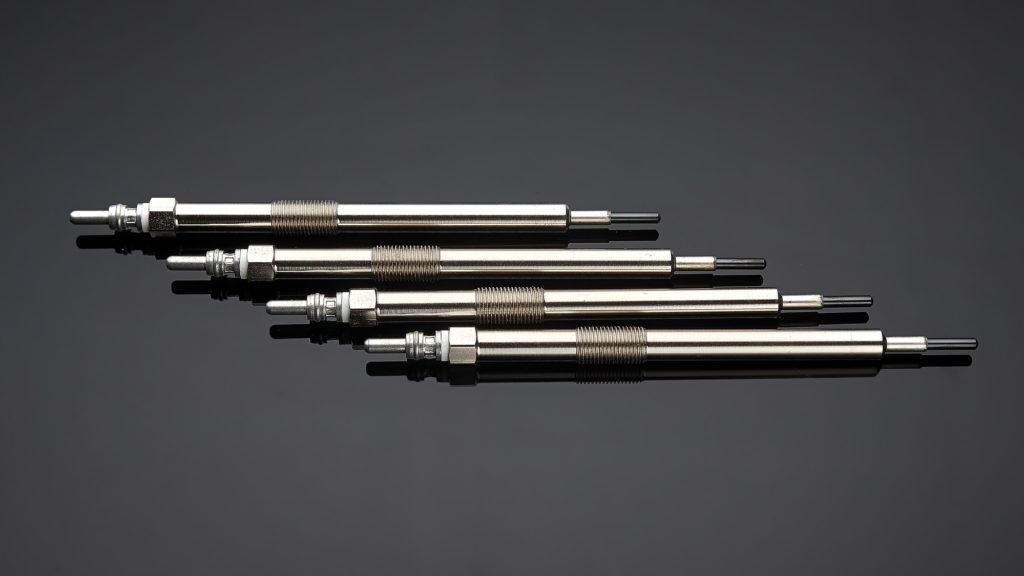
Symptoms of Diesel Glow Plug Failures
Older diesel-powered vehicles can start even when all glow plugs are not working, but this does not apply to the modern vehicle. Here are symptoms that show your automobile has a defective glow plug or two:
- Hard starting—The combustion chamber may not reach the ideal temperature to ignite the fuel and start the engine in cold conditions. If your battery or fuel has no problems, check on the glow plugs. Hard starting puts stress on the engine’s components, leading to premature wear and tear.
- Engine misfiring—The combustion process requires a high compression rate, fuel injection at the right time and in the correct amount. Misfires may be because of issues with fuel injection, compression, and fuel quality. Fuel may flood the combustion chamber, leading to reduced power output until the remaining fuel is burned. Engine misfires can also cause issues such as clogged fuel injectors and engine knocking.
- Rough idling—Burned-out glow plugs because of carbon fouling or damage make starting your vehicle progressively hard in cold temperatures. It also leads to rough idling, and the vehicle produces white smoke for a few minutes after starting. If the tips of all glow plugs are burned, inspect the injection timing.
- Reduced fuel efficiency—Starting the engine consumes fuel. Malfunctioning glow plugs will cause the engine to inject diesel into the combustion chamber without ignition continuously. Unburned fuel goes to waste instead of powering the vehicle.
- White smoke—This usually means there is not enough heat to burn the fuel. Unburned fuel particles travel through the tailpipe as smoke with a rich fuel smell. However, it is common to see white smoke from the exhaust in cold weather until the engine is warmed up. White smoke after warming up means you may have a retarded injection timing, worn injection pump, or one or more bad injectors.
- Black smoke—An indicator of imbalance in the air-fuel ratio. You either have too much fuel in the mix or not enough oxygen to burn the fuel. Defective glow plugs can interrupt the sensitive diesel combustion process, leading to black smoke from the tailpipe.
- Check engine light is on—Dozens of reasons can lead to the check engine light, including faulty glow plugs. Error code P0380 may show you have an issue with one or more glow plugs.
When to Change Diesel Glow Plugs
The average lifespan of a glow plug on a diesel engine is about 100,000 miles. So you should not worry about them often. However, they can fail before they reach their lifetime miles—especially when you hard start frequently or use low-quality glow plugs.
As a diesel engine owner, know the signs of faltering glow plugs and act fast to replace them. The longer you wait before making a replacement, the more damage you will have to deal with.
There are different replacement intervals for glow plugs, depending on the brand, style, and price point. Some manufacturers recommend changing after 60,000 miles, especially in cold weather. Others suggest sooner than 60,000 miles, but there is the option to replace the plugs when you realize they are failing.
FAQ
Do All Diesel Engines Have Glow Plugs?
Not all diesel engines require glow plugs. The plugs are critical for diesel vehicles with an electric start.
However, many diesel vehicles in production today, especially the military, run without glow plugs. These vehicles depend on adiabatic compression for the fuel-air mixture to produce heat for auto-ignition.
Do Diesel Engines Have Carburetors?
Diesel does not evaporate like gas, so a carburetor is unnecessary, and fuel is injected into the intake air under high pressure to atomize. Intake valves close, and the compression stroke starts.
A carburetor in gas engines prepares the fuel-air mixture for a spark-ignition engine. The carb converts gas into fine droplets and mixes it in the air so it burns smoothly.
How Many Spark Plugs Does a V6 Diesel Engine Have? A V8 Diesel Engine?
Many diesel engines don’t have spark plugs. They use glow plugs.
The number of glow plugs in the diesel engine depends on the engine manufacturer. A standard diesel engine will, for example, have four, five, or six glow plugs.
Manufacturers combine the glow plug with other parts, such as the fuel injector, in many newer diesel engines. Ford has four glow plugs per cylinder in the Triton V8 engine, while Renault V8 diesel trucks have 14 glow plugs.
How Many Spark Plugs Does a Gas Truck Have?
A 4-cylinder vehicle will have four spark plugs; a 6-cylinder has six, and so on. However, some variants require a twin-spark, which means they have two spark plugs per cylinder.
Do New Diesels Have to Be Plugged In?
The exact temperature to plug in an engine block heater varies. However, keep in mind that temperatures are low at night and early morning hours. Newer diesel models can start at temperatures as low as -30 degrees centigrade. However, you may need to plug in the engine block heater before temperatures drop to -15 degrees centigrade.

